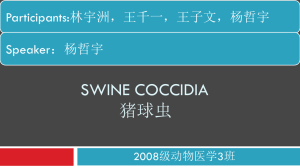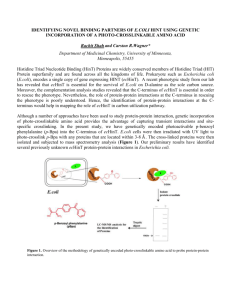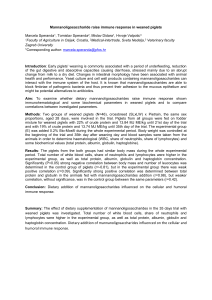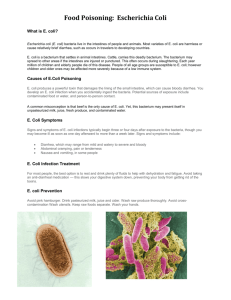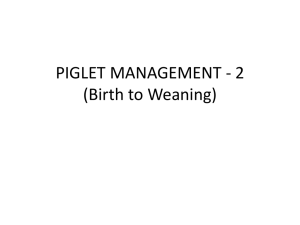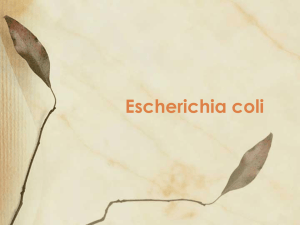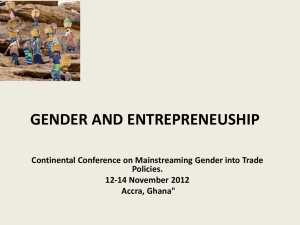Makerere-Sida-ARM-Science-Day-CoVAB
advertisement
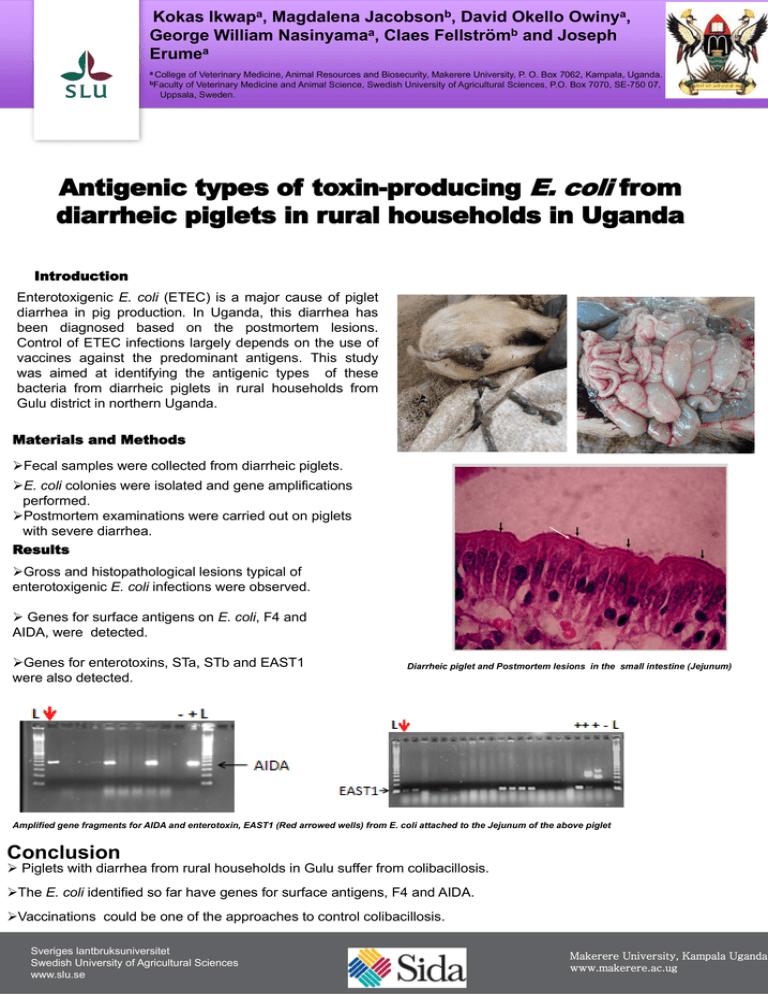
Kokas Ikwapa, Magdalena Jacobsonb, David Okello Owinya, George William Nasinyamaa, Claes Fellströmb and Joseph a Erume a College of Veterinary Medicine, Animal Resources and Biosecurity, Makerere University, P. O. Box 7062, Kampala, Uganda. bFaculty of Veterinary Medicine and Animal Science, Swedish University of Agricultural Sciences, P.O. Box 7070, SE-750 07, Uppsala, Sweden. Antigenic types of toxin-producing E. coli from diarrheic piglets in rural households in Uganda Introduction Enterotoxigenic E. coli (ETEC) is a major cause of piglet diarrhea in pig production. In Uganda, this diarrhea has been diagnosed based on the postmortem lesions. Control of ETEC infections largely depends on the use of vaccines against the predominant antigens. This study was aimed at identifying the antigenic types of these bacteria from diarrheic piglets in rural households from Gulu district in northern Uganda. Materials and Methods Fecal samples were collected from diarrheic piglets. E. coli colonies were isolated and gene amplifications performed. Postmortem examinations were carried out on piglets with severe diarrhea. Results Gross and histopathological lesions typical of enterotoxigenic E. coli infections were observed. Genes for surface antigens on E. coli, F4 and AIDA, were detected. Genes for enterotoxins, STa, STb and EAST1 were also detected. Diarrheic piglet and Postmortem lesions in the small intestine (Jejunum) Amplified gene fragments for AIDA and enterotoxin, EAST1 (Red arrowed wells) from E. coli attached to the Jejunum of the above piglet Conclusion Piglets with diarrhea from rural households in Gulu suffer from colibacillosis. The E. coli identified so far have genes for surface antigens, F4 and AIDA. Vaccinations could be one of the approaches to control colibacillosis. Sveriges lantbruksuniversitet Swedish University of Agricultural Sciences www.slu.se Makerere University, Kampala Uganda www.makerere.ac.ug



